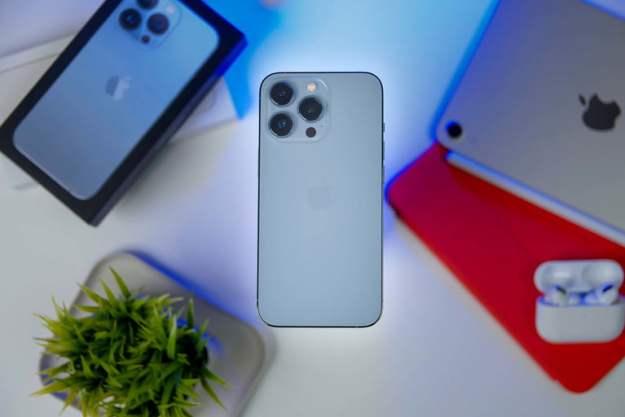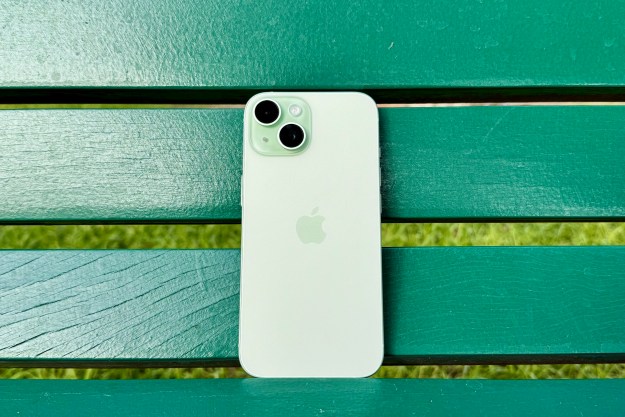Apple‘s already famous iPhone is set to go on sale at Apple retail outlets and AT&T corporate stores in the U.S. at 6:30 PM local time. The iPhone has been the subject of a steadily building media frenzy, but was even being heralded as an industry-shifting device back in January when Apple announced it at the Macworld Expo in San Francisco. Pundits and prognosticators are full of opinions about whether the iPhone will succeed or fail in the marketplace, but one thing’s for sure: Apple has certainly managed to capture the attention of the mobile industry worldwide.
For folks who haven’t been keeping up, in a nutshell the iPhone combines a touch-screen quad-band GSM mobile phone with Internet capabilities which operate both over AT&T’s EDGE-enabled data network or 802.11b/g Wi-Fi. In addition to email, text messaging, and Web browsing, the iPhone also offers Visual Voicemail, which lets users to cherrypick voice messages they’d like to hear one at a time using an onscreen interface. The iPhone is also a “widescreen” iPod, letting users sync with their iTunes-managed media collections so they can take their music, videos—and Internet browsing, email, and, of course, their phone—with them wherever they go in a single device. The iPhone also sports a 2 megapixel camera, Bluetooth 2.0+EDR and is available with in storage capacities (4 GB and 8 GB) for $499 and $599, respectively.
Under the 3.5-inch touchscreen, the iPhone actually runs a version of Apple’s Mac OS X operating system, which means the built-in Internet browser is really Apple’s standards-based Safari, and has enabled Apple to craft a unique touch-based interface for the iPhone with intuitive zooming, context-sensitive interface elements, and leveraging multi-touch capabilities. Apple is including a number of applications with the iPhone—and recently revealed the iPhone will support streaming video from YouTube—supports multiple email accounts, ties directly to Google Maps, and supports syncing calendar and contact information every time users connect their iPhone to their computer. (Users will need the just-released iTunes 7.3 to activate and sync their iPhones.)
The iPhone has its share of adherents—no doubt including the 17,000 or so Apple employees and contractors who received free iPhones this week—who hail the iPhone as the first true convergence device. They agree other companies have brought together all the elements of the iPhone (and sometimes more) in other products, but none have made it fit together and function as cleanly and intuitively as Apple—the company which for decades has been known for its elegant and industry-defining interface and industrial designs. To get a sense of how the iPhone’s interface differs from other mobile devices, check out the ever-growing number of demo videos on Apple’s iPhone site.
iPhone detractors point immediately to the price‐after all, $500 to $600 is a lot to pay for a phone, even with numerous additional capabilities. Some say the iPhone’s onscreen touch-based keyboard isn’t going to win any fans amongst heavy email users or text messaging fanatics, while IT and enterprise users lament the lack of support for Microsoft Exchange and other enterprise-level communication solutions. (Apple says it is working with companies on this front, and the situation should change shortly.) Application developers would love to build solutions for the iPhone, but they can’t: at Apple’s World Wide Developer Conference, the company essentially told developers that if they want to deploy a solution on the iPhone, their only mechanism is to deploy a Web-based solution using Web 2.0 technologies. That’s fine for some things, but it doesn’t get developers on the iPhone’s list of applications, doesn’t let them access the iPhone’s integrated storage, and doesn’t let their applications work if (heaven forfend) an iPhone user can’t access the Internet. And while Wi-Fi based Internet access is all well and good, many believe iPhone users will find data services via AT&T’s EDGE-based network (which tops out at 150 Kbps) to be disappointing—particularly if they’re trying to download songs or access YouTube-based video.
Ultimately, only time will tell if Apple’s first foray into the mobile communications arena succeeds or fails. But for the time being, the entire field essentially has no choice but to respond to the iPhone, and that’s a strong measure of Apple’s influence across the wider high-tech industry.
Editors' Recommendations
- I keep forgetting about the Apple Watch Series 9’s coolest feature
- Apple is about to do the unthinkable to its iPads
- Best Verizon new customer deals: Galaxy S24, iPhone and more
- Nomad’s new iPhone case and Apple Watch band may be its coolest yet
- An Apple insider just revealed how iOS 18’s AI features will work


